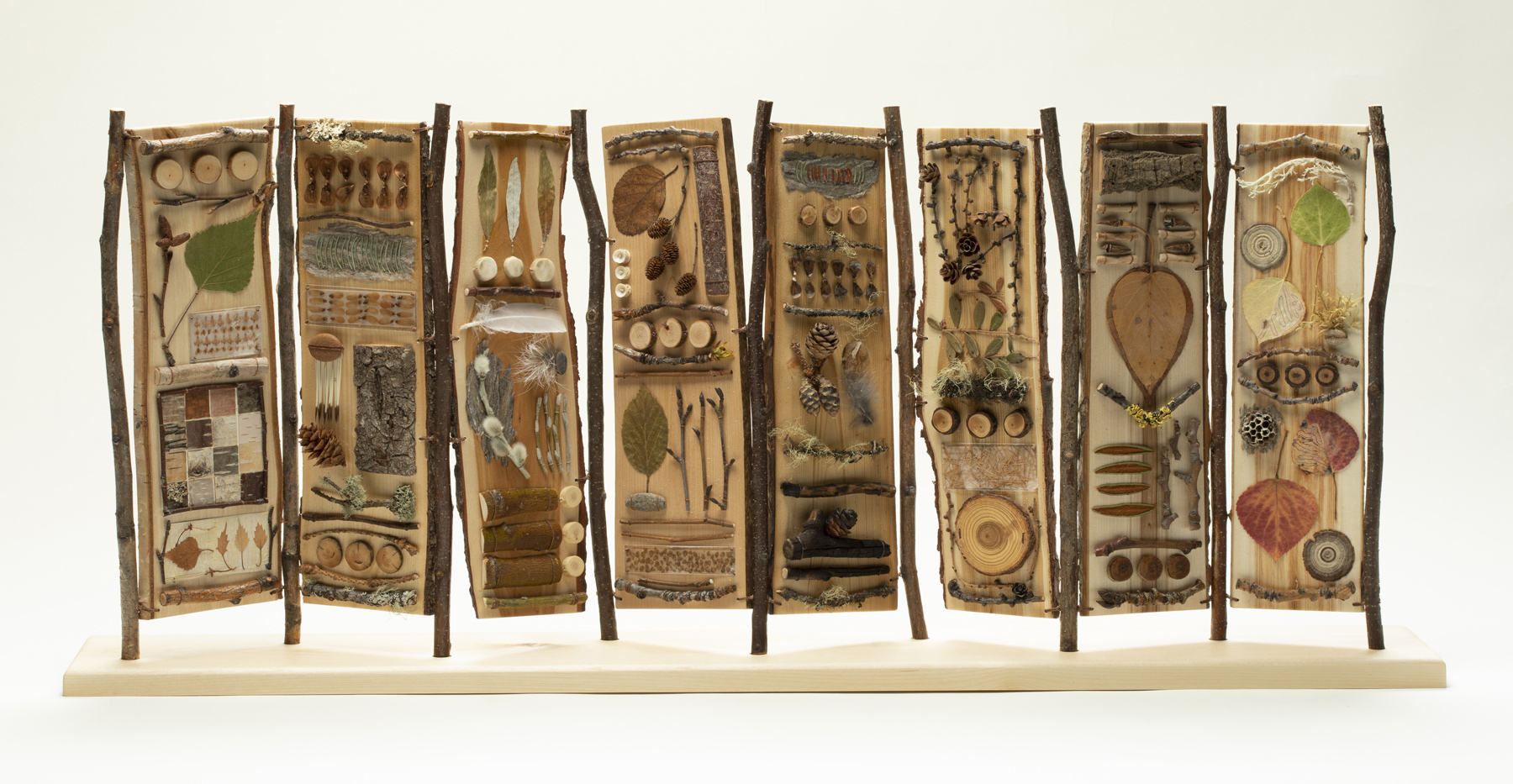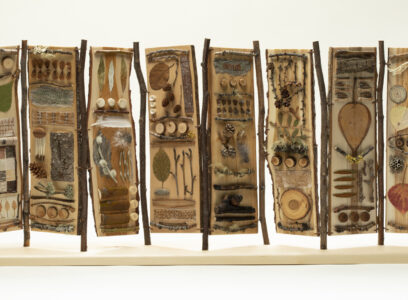Susan Campbell
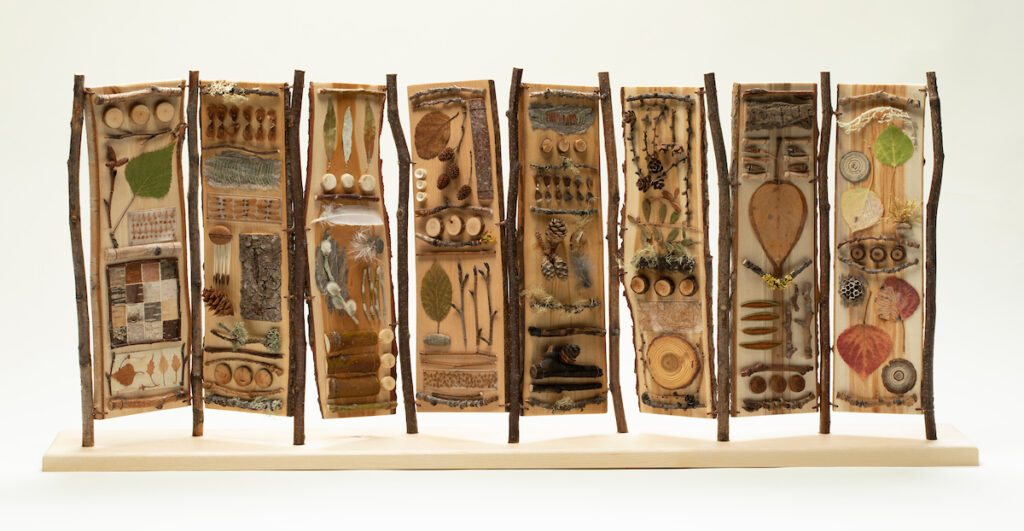
Boreal Colloquy
When I moved to Interior Alaska three decades ago, I found home. This ITOC project offered a space for me to think about how the boreal forest resonates for me and to delve into learning more about the intricacies of the forest from ITOC scientists, artists, educators, and the resources they recommended.
I am drawn to trees. Shaped by ice, fire, water, snow, permafrost, human activity, and climate, the trees of the taiga (the boreal forest) are continually weaving a story of life, death, and regeneration. I’ve titled this piece Boreal Colloquy because I imagine it to be just that, a colloquy, a conversation, with the six trees (birch, white spruce, black spruce, tamarack, balsam poplar, aspen) and two shrubs (willow, alder) that dominate the boreal forest.
Created from flitches, flat panels of wood cut vertically from each of the eight trunks, this artist book dedicates one flitch to each tree or shrub. Artifacts attached to each panel come from a particular tree, along with other objects entwined with that tree/shrub’s life. For example, willow’s flitch is home for moose bone and a ptarmigan feather. A spruce grouse feather is attached to black spruce. Salmon bones from a river where alder grow are laced to the alder’s panel. Porcupine quills are sewn on the white spruce flitch. Fungus and a wasp nest embellish aspen’s page. Cranberry leaves are joined to tamarack’s panel and Labrador tea is tied to balsam poplar.
Thriving in muskegs, tamaracks tell a story of resilience. Birch and aspen speak of beauty, elegance. Fire weaves a complex tale in the lives of spruce. Used for food, shelter, and medicine, balsam poplar and willow hold a history of giving. Alders know how to cooperate, how to nurture. Every tree speaks of tenacity, the ability to survive winter’s dark cold. They each radiate joy in summer’s long light.
Imagine the trees saying, “Look closely at our seeds and leaves, bark and twigs, our texture and color. The tapestry we weave with weather, soil, plants, insects, and animals is our story. Listen.”
When I am in the forest, I inhabit an attentive space. Likewise, as I created this piece I felt engaged in an intimate conversation with these trees. I offer Boreal Colloquy as a celebration of the tapestry that is the boreal forest’s story.
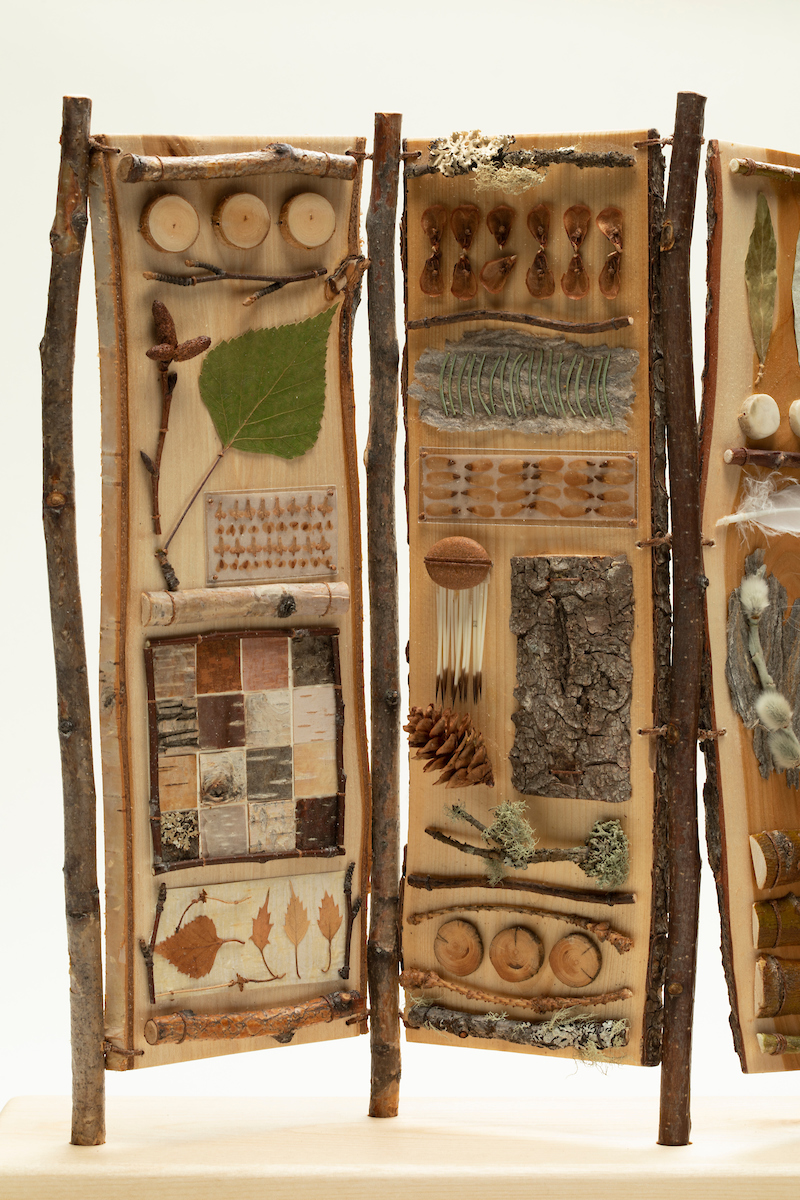
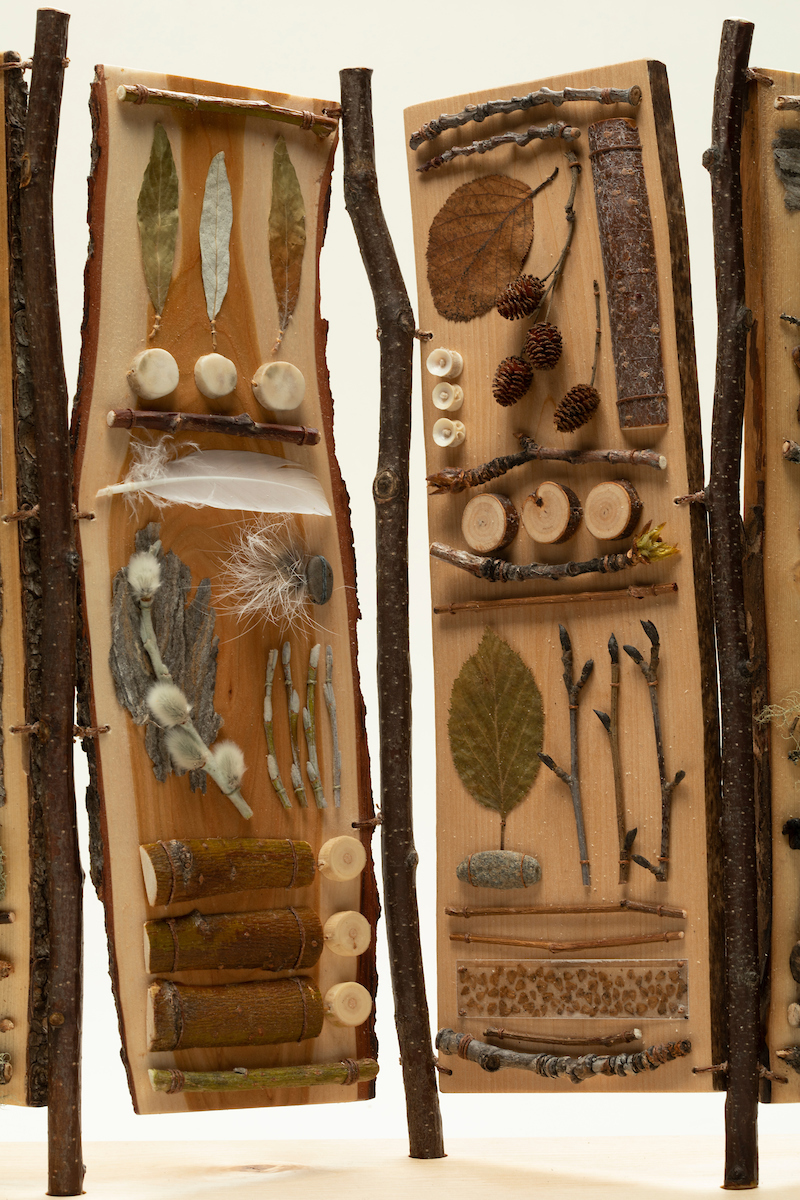
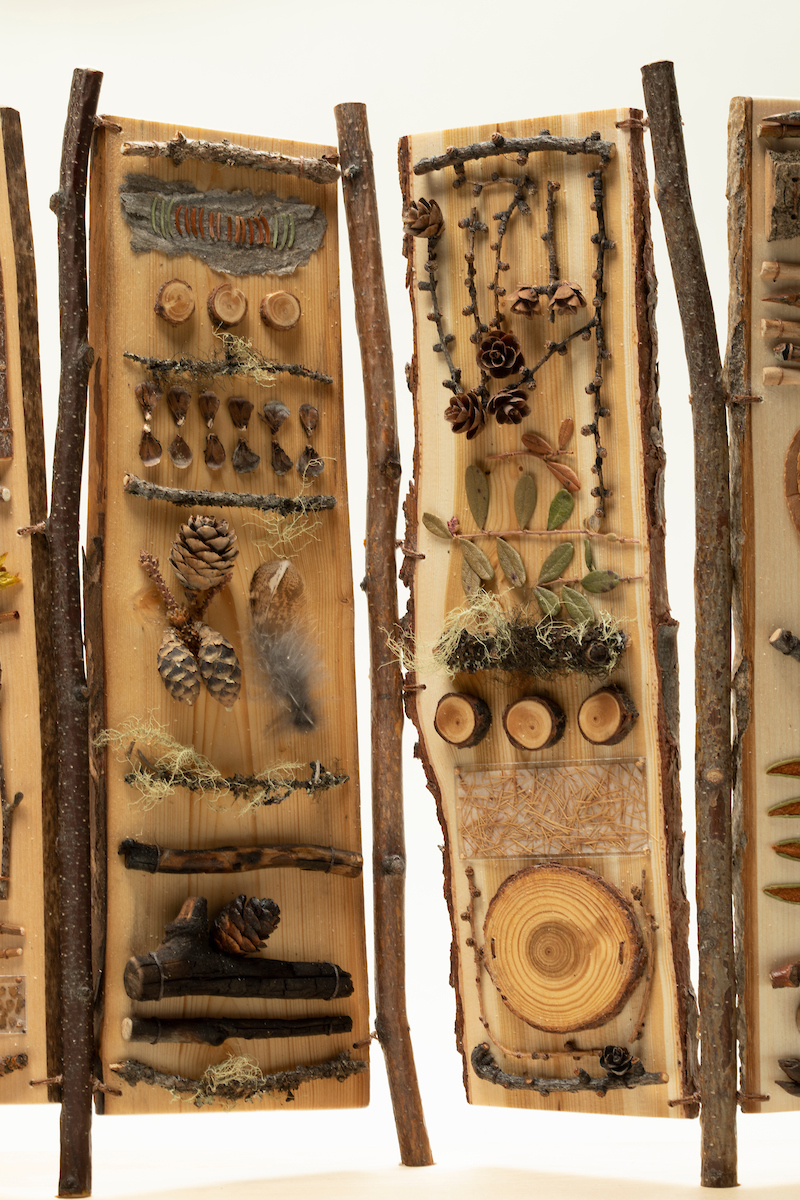

Susan Campbell
SUSAN CAMPBELL arrived in Alaska in 1989 and found home. After three decades teaching elementary school, she turned her energy toward writing poetry and creating artist books. She is also an avid outdoor adventurer. Her work reflects her connection to the natural world and is inspired by her explorations in the far north. The Alaska State Museum and the University of Alaska Rasmuson Library house her work. Her poems have appeared in various journals and a specially commissioned chamber music score. She has been an Artist in Residence in Denali National Park and an artist/writer in ITOC: Microbial Worlds.

